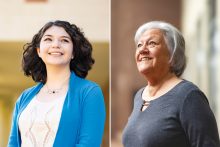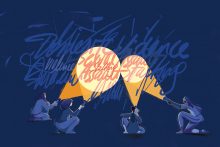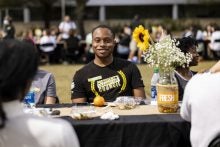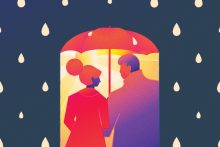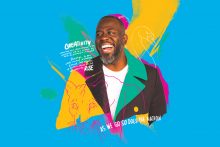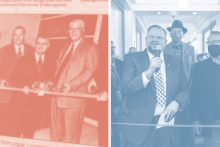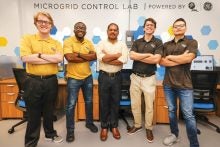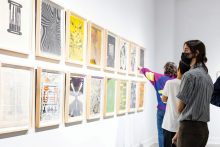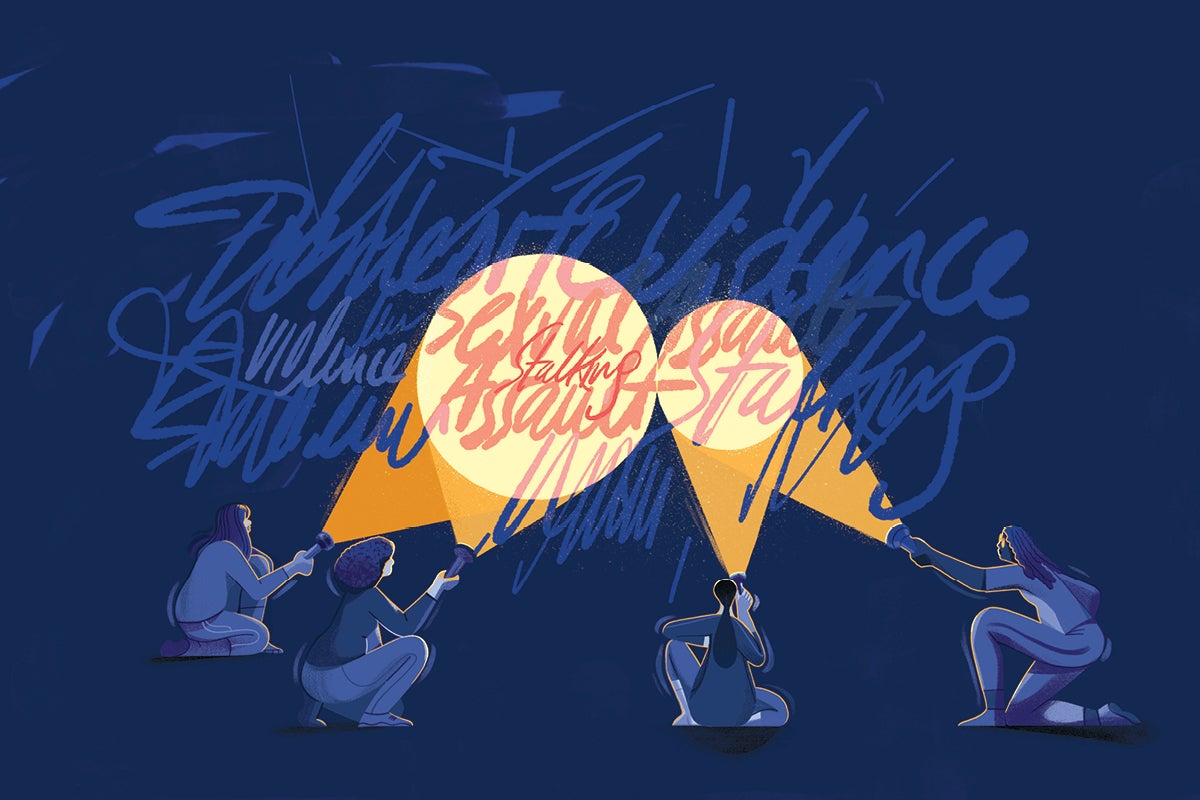
It’s 5:30 p.m. on a Monday, and a thin red banner appears on the TV screen: Breaking News. It seems like we’ve seen this story before. A former pro football player has just been arrested for aggravated battery. The victim? A young woman, the mother of the player’s months-old son. The woman is concerned for the safety of herself and her baby because the perpetrator will inevitably bond out of jail.
There’s a surveillance video, too.
The footage is hard to watch, impossible to ignore — the woman is hit repeatedly and thrown into a TV before it crashes onto her. Within hours, however, the football player says the woman was at fault. Media outlets publish new headlines. The cycle turns to victim-blaming.
As difficult as it is to even read about this incident, the harsh truth is this: Violence against women is happening at this very moment. In 2021, the World Health Organization reported that nearly 1 of every 3 women worldwide has been subjected to physical and/or sexual violence. The number is even higher among LGBTQ+ individuals and women of color.
“The statistics are staggering, but honestly? We’re at a point where we don’t need another prevalence study to prove what’s going on,” says Bethany Backes, assistant professor in UCF’s Department of Criminal Justice and a member of the Violence Against Women [VAW] faculty cluster. “I want to think big. Violence against women affects all of us. It’s time we all do something about it.”
Backes and her teammates in the VAW cluster came to UCF for that very purpose — and to also combat violence against all people. They bring expertise from fields like criminal justice, psychology, social work, public health and sociology. They collaborate with colleagues in computer science, economics and medicine. They pinpoint social programs that work and those that don’t work. And they challenge cultural attitudes and dig for the roots of violent behavior toward women so they can pull them out for all to see.
“Our ultimate goal is to work ourselves out of a job,” says Assistant Professor of Social Work and VAW researcher Julia O’Connor. “We believe we can end this. There’s too much at stake.”
Abuse affects our healthcare system, our neighborhoods, our economy and lives forever. It’s too easy to look the other way until news breaks or a video surfaces. What about the millions of women who have been, will be or are being abused out of sight?
Years before joining the VAW cluster at UCF in 2019, O’Connor saw survivors every day in shelters for women escaping abusive relationships. “The work was meaningful but exhausting. We’d care for one woman, knowing that two more would be right behind her.”
O’Connor agreed to come to UCF for two main reasons: “Because the university is one of the few institutions in the country committed to this,” and “I knew I’d be working alongside a group of researchers determined to push back against the tide.”
Backes left a great career with the U.S. Department of Justice for the same reasons. Or, as she describes with measures of wisdom and bluntness: “I wanted to join this group of kick-ass people who are driven to get something done.”
Backes wants to talk about college football. She has a favorite team, and she converses for 15 minutes about coaches, players and game plans. But you can sense the tension in her voice when the conversation shifts to the treatment of women in so-called “manly environments.”
“Masculinity can be toxic. Our research finds it in oil towns with transient male populations, the media and in the patriarchy of sports,” she says. “We should never revere a person with an assault allegation. Never. When we do that, it only makes us insensitive about all violence against women.”
The news about the girlfriend abused at the hands of the ex-NFL player will fade, but for the girlfriend it’s a forever moment. She’s a mother, a daughter, a neighbor. She’s a survivor. We all know women like her, even if there are no visible bruises or pictures to prove what she survived.
Online sites such as domesticshelters.org help victims of domestic violence find temporary housing and a safe bed. Since it began in 2014, the total number of visits at just that one site are approaching 15 million.
It’s just one page on the internet.
“The numbers are daunting, and worse, they’re underreported,” says O’Connor. “A lot of survivors say nothing out of fear. They don’t want the attention, they don’t want to be victim-shamed, they may not want police involvement, they don’t want the person who perpetrated the abuse to do it again. And keep in mind, abuse has no social, economic or generational boundaries.”
A victim is probably sitting in class. She may be getting coffee in the breakroom. We have no idea.
“One of the first steps we can do to change this,” says Backes, “is to listen. Not fix or question. A victim needs someone … this is important … she needs someone to believe [her].”
“Abuse has no social, economic or generational boundaries.”
As an undergraduate student in college, Backes served as a resident advisor. Several young women quietly came to her after being assaulted because they knew of the tendency, even among friends, to doubt.
O’Connor remembers reading through daily police reports of violence against women while working in a prosecuting attorney’s office. She served as a victim advocate in court.
“The cases came day after day. I felt like a Band-Aid on a gushing wound,” she says.
One morning, O’Connor called a woman whose husband had been arrested the previous night.
“Julia, do you know who you’re talking with?” the woman on the phone asked.
“I couldn’t believe it,” O’Connor says now. “She was an attorney connected with our office, and she was concerned as much for her job as for her safety. All of her professional [colleagues] were about to know all of her private life.”
It’s among the many complexities a woman considers after being abused. Who will listen? Where can I go? What will happen to him? What will happen to me?
“This is what gets me up in the morning,” says O’Connor. “I’m optimistic because UCF has made real investments to solve this. The university chose to recruit this team of researchers. We keep each other going whenever one of us hits a dark spot because the statistics can seem overwhelming.”
One in 3 women. Someone has to reverse the trend.
The tone in Pam Wisniewski’s voice is calm and peaceful, the trademark of a self-described “computer science nerd.” Don’t be naive enough to question her resolve, though.
The VAW research team cannot change the behaviors of a society in a bubble, so teachers like Wisniewski, an associate professor of computer science, gladly add their expertise and background. In particular, she’s studying the ways private online messages can indicate the spiral into an abusive relationship.
“We’re looking at how we might create early warning mechanisms that girls can easily recognize on their devices,” Wisniewski says. “Once we put together a village of researchers, clinicians and entrepreneurs, I can see us breaking specific cycles of abuse.”
Wisniewski has a resume steeped in research interests. She also mentors women at UCF. She openly shares her story of growing up because it stokes the fire in her spirit. Her mother was abused as a girl. So was Wisniewski, who says her mother’s boyfriend molested her starting when she was in middle school.
“As much as I love science, this topic is near and dear to my heart,” says Wisniewski. “Believe me, it hasn’t been an easy path to get where I am.”
In high school, Wisniewski left home, moved into an apartment and worked at a Jiffy Lube to support herself. She channeled her energy into becoming salutatorian of her senior class because the classwork gave her a place to escape.
“We struggle our entire lives with PTSD and self-doubt,” Wisniewski says of every survivor. “So, I consider myself blessed to be doing what I’m doing. It doesn’t always turn out this way.”
Once we put together a village of researchers, clinicians and entrepreneurs, I can see us breaking specific cycles of abuse.”
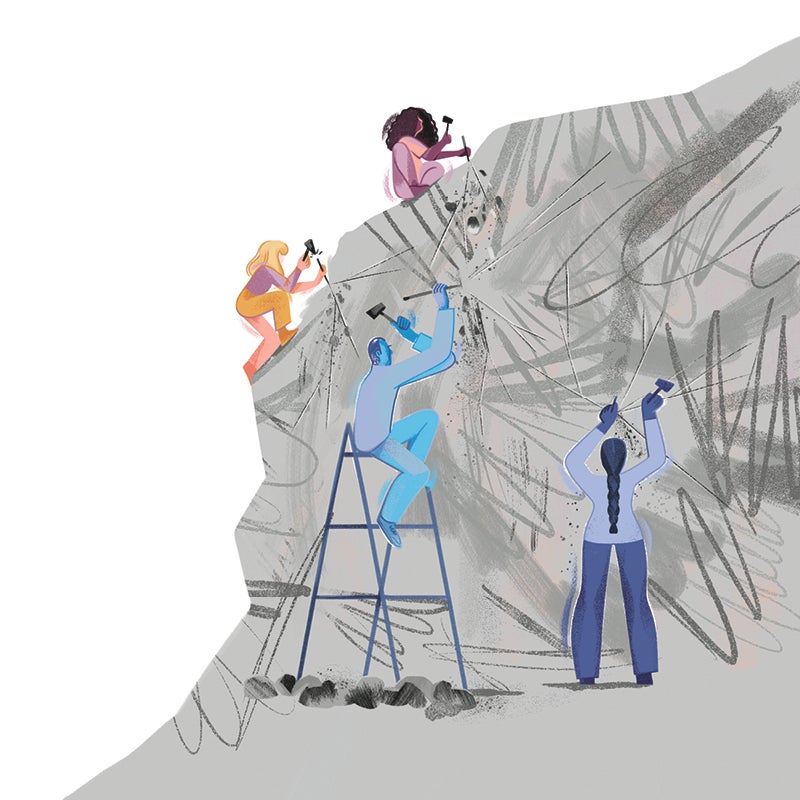
According to the National Coalition Against Domestic Violence, victims of intimate partner violence lose a total of 8 million days of paid work each year. As many as 60% of victims lose their jobs. The individual cost for each woman averages more than $100,000 over a lifetime. The Centers for Disease Control and Prevention reports that the costs of lost productivity, medical services and other factors from domestic violence drain $3.6 trillion from the U.S. economy.
“The numbers are inspiration enough [to take action],” says Associate Professor of Economics Melanie Guldi. “Everyone should be interested in this because violence affects so much of our society.”
As startling as the economic projections are, no financial study can calculate the cost of lost dreams. The words “you can be anything you want” vanish in a fog of very real conditions like insomnia, headaches, anxiety and early onset dementia. One of the earliest problems for survivors is difficulty focusing. Women in school might be placed on academic probation. They might drop out altogether, change jobs or move away.
“Then comes the narrative that a woman is unstable or unreliable,” says Backes. “That’s what is really frustrating. If you were abused and lived in fear, would you just go about your day as if everything is normal?”
She’s done a deep investigation into a major tipping point: affordable and safe housing. Nearly 39,000 women and children enter a safe shelter on any given day. Many more, however, will go no further than thinking about it.
“Unfortunately, the fear of homelessness, especially for those with children, can be greater than the fear of living with an abuser,” says Backes. “Victims have to weigh multiple factors to make the decision they think is best for themselves.”
To make the decision more difficult, abusers often use control tactics to keep victims trapped — financially and emotionally. With no transportation, no adequate income to support herself and her children, and no alternative place to live, a woman can feel like there’s nowhere to turn.
The VAW cluster, which is lead by Professor of Sociology Jana Jasinski, is working to build evidence to not only prevent violence from occurring in the first place but to improve responses to survivors.
“Every situation is different,” says Backes. “Sometimes [survivors] need financial support to pay off debt or to pay for education. Others need long-term housing and supportive services. If we can prove the effectiveness of specific programs — like transitional housing — to provide that kind of help, more survivors will be able to obtain safety and access to the resources that work for them.”
Expanding programs and housing is vital, but the VAW cluster recognizes it’s still a response after violent acts have happened. To really end abuse, they’re looking at a much bigger picture. They’re looking at us.
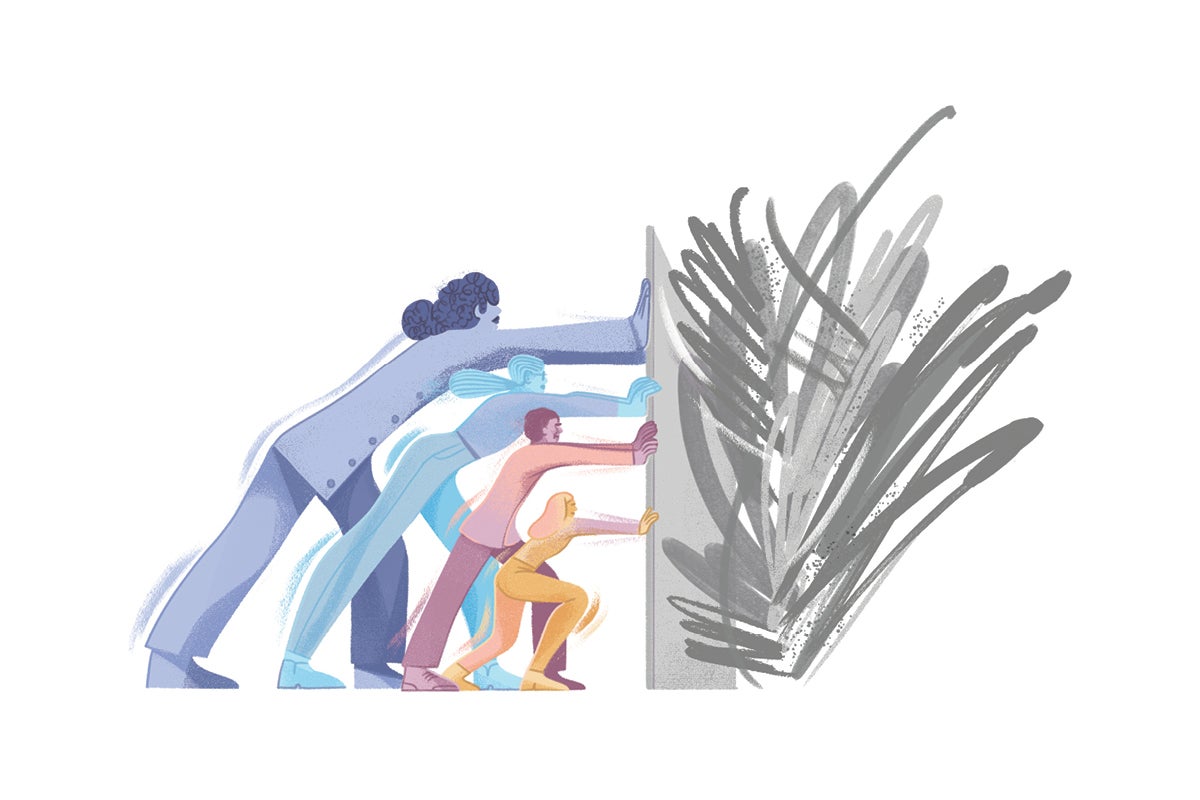
The professors want their jobs to be history. As in, finished. Part of an uneasy past. “It might not happen in my lifetime,” says Backes of making the VAW cluster obsolete, “but we can make enough progress for the next generation to do it.”
If the statistics and stories about violence against women disturb us, then we must be paying attention. That’s a sign of progress. The next step: taking a stand and changing cultural elements that need to be addressed in ways we might not notice as easily as a news report.
The women who helped establish the VAW team of researchers would say that every single woman has endured some type of harassment. Cat calls. Unwanted touches. A culture that accepts any of this as normal behavior (such as a college campus) is ignoring early warning signs of potential abuse.
A symptom of our current culture is that only 20% of college women who are sexually assaulted or raped report the incident to law enforcement.
Can a dozen or so women at UCF really change all of this?
“We have reasons to be optimistic,” says O’Connor, “because the university is fully with us. More people are giving it the attention it demands.”
Campus resources, like Victim Services, provide students the secure space to disclose their stories of abuse. The VAW cluster is working with Student Health Services to develop questions that will help identify recent or ongoing abuse, and to immediately connect students with an advocate. Prevention and identification of abuse are mandatory discussions at orientation. Serious questions are asked: What’s a healthy relationship? How would you respond when you see someone berating another student?
For the rest of us, ask yourself the following questions. The answers will say a lot about how far we’ve really come — and how far we still need to go:
Honestly, if you could sexually assault someone and get away with it — would you do it?
What if there’s no video of abuse — will you believe the survivor?
Are you willing to push against accepted societal culture, to support survivors?
“We’re getting closer to the point where we no longer say, ‘It isn’t my problem,’ ” says Backes. “It belongs to all of us. So the solution has to include everyone.”
That last question about changing societal culture points back to what Backes admits is one big gap in the VAW cluster: They need some kick-ass men to join these kick-ass women.
“We cannot fully address this without the impactful voices of men,” Backes says.
One in 3 women. Backes thinks about it every day because her greatest fear is also her greatest motivator. “My daughter tells me, ‘Someday I want to help women, just like you do,’ ” she says.
Backes daughter is 8 years old. Full of dreams. Full of potential. She’s all around us. She wants to end this, too.
Red Flags of Abuse
The researchers in the Violence Against Women cluster point out that the name of their group does not mean they’re focused only on solutions to help women. “Our work is for the benefit of men and nonbinary individuals, too,” says Julia O’Connor. People in any relationship should be aware of the following warning signs from the National Domestic Violence Hotline:
- Embarrassing or putting you down
- Looking at you or acting in ways that scare you
- Controlling who you see, where you go or what you do
- Keeping you or discouraging you from seeing your friends or family
- Taking your money or refusing to give you money for expenses
- Preventing you from making your own decisions
- Telling you that you are a bad parent or threatening to harm or take away your children
- Preventing you from working or attending school
- Blaming you for the abuse or acting like it’s not really happening
- Destroying your property or threatening to hurt or kill your pets
- Intimidating you with guns, knives or other weapons
- Shoving, slapping, choking or hitting you
- Attempting to stop you from pressing charges
- Threatening to commit suicide because of something you’ve done
- Threatening to hurt or kill you
- Pressuring you to have sex when you don’t want to or do things sexually that you’re not comfortable with
- Pressuring you to use drugs or alcohol
- Preventing you from using birth control or pressuring you to become pregnant when you’re not ready
If You Need Help
The UCF Victim Services Hotline is available all day, all night, seven days a week. Call 407-823-1200 or text 407-823-6868 to talk with an advocate.
The National Domestic Violence Hotline is also available 24/7 at 800-799-SAFE (7233). You can also live chat at thehotline.org.
